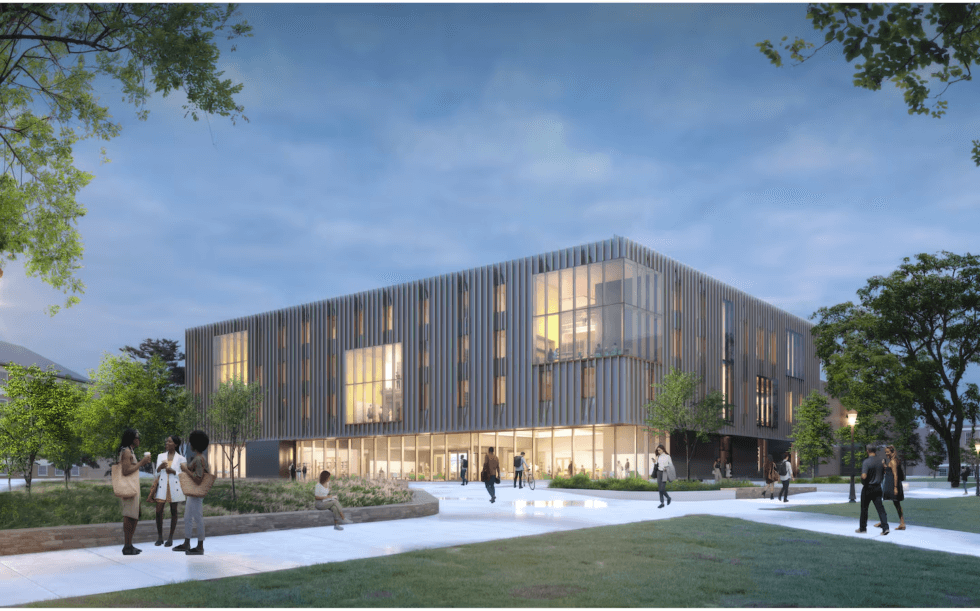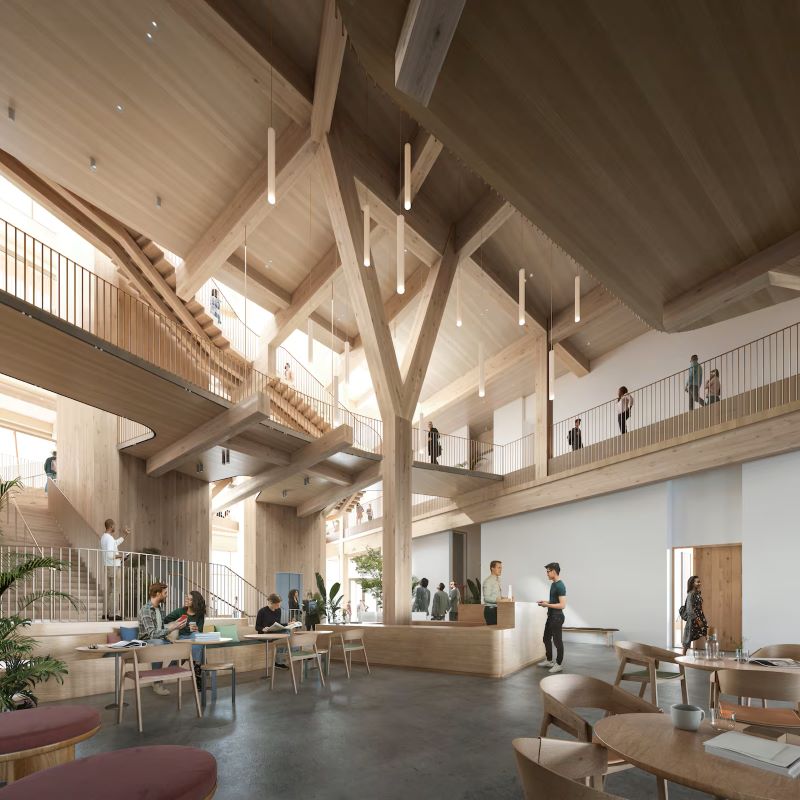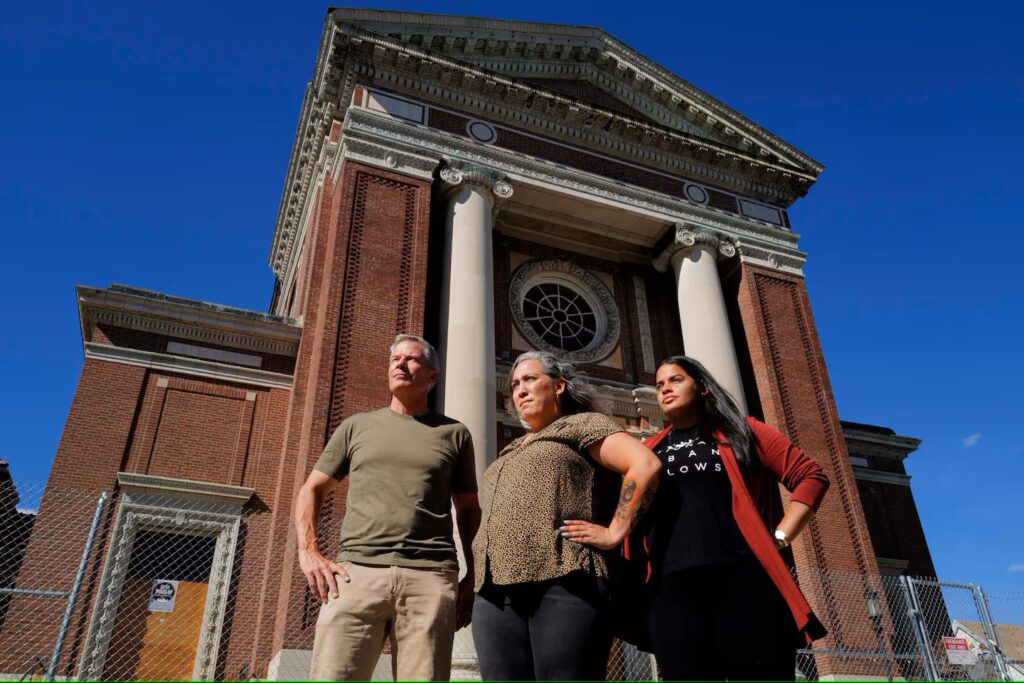At Payette, architects are leading the charge in the U.S. by focusing on a sustainable construction approach called embodied carbon reduction.
This method aims to cut down greenhouse gas emissions at every stage of a building’s life cycle, including the production, transportation, and eventual disposal of construction materials.
Taking a fresh perspective on traditional building methods, architects are designing sustainable construction projects with wood, a modern construction material, for construction purposes to partially or fully replace the use of concrete, thereby reducing construction waste.
Why Many Are Changing Building Materials
Every year, buildings are responsible for over a third of global carbon emissions, as highlighted by sources such as the World Green Building Council and research published in ScienceDirect.
In an effort to combat this, the Massachusetts Clean Energy Center launched its inaugural competition focused on decreasing embodied carbon in buildings across the state.
Projects Using Wood as a Building Material
Among various projects that ranged from office renovations to affordable housing developments, Payette emerged victorious in June, winning the top award for its innovative design of a UMass research facility. This challenge shines a light on efforts to reduce emissions from buildings right from the start, even before they are fully operational.

The exterior of the University of Massachusetts Amherst’s Sustainable Engineering Laboratories building, set to be finished in 2026. This building’s design clinched the top award for new construction in the state’s competition aimed at reducing embodied carbon. Payette is behind this winning design.
The race for innovation is Harvard University’s upcoming “Treehouse” conference center on the Allston campus. This building, set to resemble a modern-day spaceship encased in glass, has achieved a significant environmental milestone. By replacing cement – a major contributor to carbon emissions – with an eco-friendlier mix that incorporates recycled glass, the design team has successfully cut the project’s embodied carbon by over 50%.
In various sections of the building, the design team chose to replace concrete with materials like spruce and Alaskan yellow timber, known for their reduced carbon impact.
The first of two renderings of the inside of the Treehouse at Harvard University, illustrating the use of mass timber in the building, which requires less carbon than manufacturing steel or concrete. Aesthetica Studios/Studio-Gang
Meanwhile, the Bunker Hill public housing redevelopment in Charlestown, which entered its Building M into the clean energy competition, turned to cross-laminated timber, a reinforced wood product popular in Europe since the early 2000s that has more recently gained traction in the United States. The timber requires much less energy than manufacturing concrete or steel. Plus, even after it’s chopped down, certain new timber products can even continue to absorb carbon from the atmosphere.
Other Benefits From Wood Based Building Materials
“The clear and runaway big winner for the Bunker Hill project is the cross-laminated timber in the floor structure, which has significant [cost and carbon] savings” compared to typical concrete flooring, said Matt Root, an associate principal designer at Integrated Eco Strategy, which consulted on the building.
In the case of the Bunker Hill project, the cost of wood was surprisingly similar to that of concrete. This is because wood’s thick planks, which are great at keeping heat in, meant that less money was spent on insulation compared to using concrete.
Additionally, the natural look of wood allowed architects to skip the usual finishes required for concrete floors, showcasing a more rugged charm.
Also, since wood is lighter than concrete, there was a reduction in the amount of metal needed for the building’s frame and foundation.

A rendering the Treehouse at Harvard University, which is expected to finish construction in the summer of 2025. Aesthetica Studios/Studio-Gang
Reduce Carbon By Reducing Size
Another significant and seemingly straightforward strategy to reduce carbon emissions and expenses is to minimize construction.
“If you can get creative as a designer about how to optimize that use [of space], to build less than you originally thought, that’s the slam dunk,” said Beverly Craig, program director of the high performance buildings team at the Clean Energy Center.
In their design of the UMass engineering lab, architects at Payette put that mantra into practice, eliminating a basement for the building altogether and reducing the height of several interior floors, which in total slashed the building size by 15 percent.
The team’s greatest challenge was to “maintain the quality of the space, but just do it more efficiently,” said Oldham, of Payette. “With less volume, with less size, with less scale, but still a great design.”
For Carbon-less Construction, Renovations Are Arguably Better Than Rebuilds
Adopting a minimalist approach isn’t just about designing smaller new buildings; it also involves upgrading and utilizing the current structures instead of demolishing them. This principle is fundamental for architects who specialize in refurbishing buildings, as highlighted in a discussion on the importance of green retrofits in Massachusetts housing.
At 80 West Broadway in South Boston, another runner-up in the state competition, the partial reconstruction of a restaurant and office building is salvaging the street-facing original brick walls and replacing the rest with “thin-brick,” a lightweight substitute for traditional bricks, which emit carbon during the clay-firing process.
In an innovative project by DiMella Shaffer, an architecture firm, over 60% of the historic Blessed Sacrament Church in Jamaica Plain is being preserved as it transforms into affordable housing, thanks to efforts by the Hyde Square Task Force. This initiative was highlighted in this article.

Harry Smith (left), Vanessa Snow (center), and Cisnell Baez (right) stood in front of the Blessed Sacrament Church in Jamaica Plain’s Latin Square on Sept. 1, 2022. The group of local organizers contributed to an effort to transform the church into a more than 50-unit affordable housing and community space. Carlin Stiehl for The Boston Globe.
Conclusion
Wood seems to be a promising substitute for traditional building materials like cement. It is commendable that we are taking a fresh approach with open minds based on data and sincere efforts to remain sustainable.
Time will tell if this approach will bring the gains hoped for, but anything that we can integrate to contribute to a positive change is well worth the effort.
